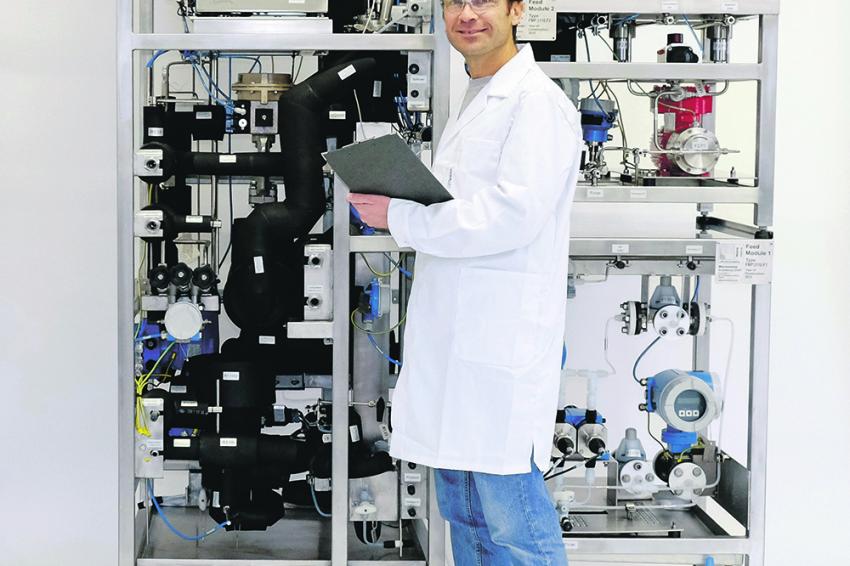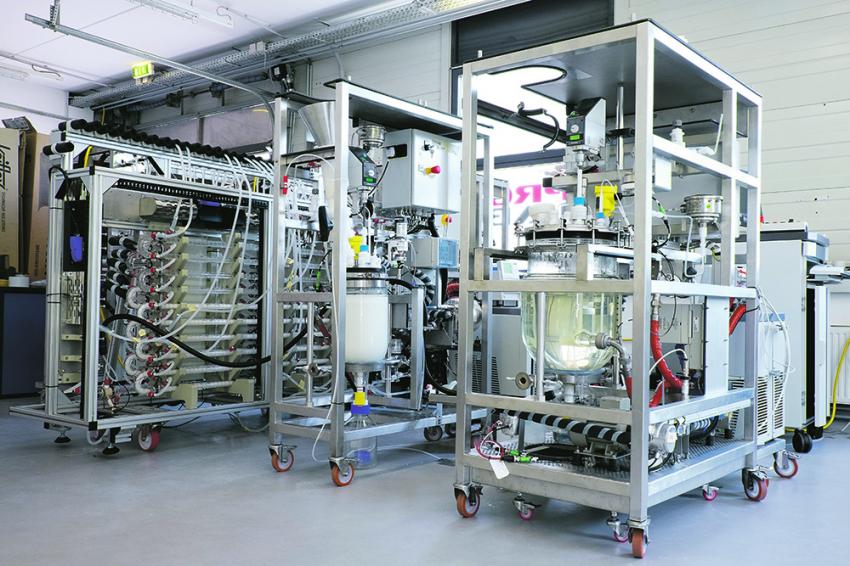Continuous Processing
Is Flow Chemistry the Future of Pharmaceutical Manufacturing?
Is it possible to learn from other industries or are we doomed to repeat the same mistakes in the pharma sector? Not long ago, I came across a Forbes article which described how streaming service provider Netflix proposed a partnership to video company Blockbuster. The new partnership would have required them to change their business model. At that time, such a decision seemed absurd and the offer was completely rejected by Blockbuster’s senior management. Nevertheless, almost two decades later, Netflix is the leader in home-media and Blockbuster is history — just because decision makers were not ready to commit to new and disruptive ideas.
Even if some people may say that the comparison is not so trivial due to the differences between the two industries (pharmaceutical vs. service provider), one should not ignore the impact that disruptive models can have on companies. This is particularly evident in the current situation of the pharmaceutical industry, which has been caused, among other things, by the fact that politicians have put increasing pressure on the industry in recent years to reduce its costs as a result of ever stricter regulations. These circumstances have lowered profit margins of many generic pharmaceutical companies and, as a consequence, have caused stock prices of some of the major players to plummet (e.g. Teva); led to some planned mergers and acquisitions to reduce costs, become more competitive and/or increase product portfolio (e.g. Mylan and the generic branch of Pfizer); or prompted companies to focus on generics that are difficult to copy (i.e. Sandoz).
A Technology on the Upswing
In this competitive field, some companies in the pharma sector have realized the benefits of continuous manufacturing and started investing in this “new” technology. For other industries, however, this technology is not new.
Novartis was one of the pioneers of this trend: In 2007 the company started a collaboration with the Massachusetts Institute of Technology (MIT) to evaluate the continuous production of a solid dosage drug starting from the chemical reagents.
Later, most of the news about investments in this technology focused on the big players (including GlaxoSmithKline, DSM, Lonza, Ely Lilly), but over time the interest of CMOs and CDMOs has increased. Contract manufacturers are already receiving requests to perform some of the processes continuously. In some cases, they are not able to offer this technology, which can lead directly to a loss of business opportunities. Some CMOs prevent this situation by building capacity and expanding their knowledge of continuous manufacturing to anticipate future requirements. Capacity and knowledge building are becoming more and more critical in the pharmaceutical industry, where outsourcing and partnerships are increasing over time.
But why is continuous manufacturing on everyone’s lips, what does it have to offer the pharmaceutical industry?
Benefits and Opportunities
A complete article could be written about the benefits of continuous manufacturing, such as better heat transfer, mass transfer, yield and other aspects. Most of these aspects have been intensively discussed by science and industry. However, when it comes to doing business and making decisions, the most important factor is cost — and that is the main difference between science and industry. In other words, chemical terms need to be translated into economic terms.
Continuous processes can be scaled up faster, as mass and heat transfer can be kept constant at different scales, which directly results in a faster time-to-market and thus higher economic benefits. Higher yields mean that less raw material is needed to achieve the same amount of end product and therefore less waste is produced — which can save a substantial amount of money.
In addition, a plant with a capacity of 10 l/h requires almost the same investment costs as one with 100 l/h. With a larger and more flexible system designed for more than one process (2 to 5 processes with a production in campaigns), business cases quickly become positive, while they would be negative for a small plant system and only one process.
Another important aspect is that continuous processes can be automated, and, in some cases, intermediate and isolation steps can be completely avoided, thus reducing labor and inventory costs.
Obstacles and Misconceptions
Even though the benefits of continuous manufacturing have already been discussed and are also known in the industry, there are still some obstacles and misconceptions which have delayed its implementation.
One of the biggest obstacles is the hesitant attitude of companies due to the potential risks associated with replacing or modifying an already implemented process. These risks relate primarily to regulatory hurdles. However, continuous production is currently being encouraged by regulatory bodies. For instance, the US Food & Drug Administration (FDA) has released draft guidelines regarding the quality of continuous processes, and the International Conference on Harmonization (ICH) supports the introduction of continuous manufacturing processes in the pharmaceutical industry with its new ICH Q13 guideline.
In addition, already installed batch systems and batch processes, which in most cases have already been devaluated, can hinder the introduction of continuous processes. If continuous processes have to be integrated into batch plants, they compete with the economic viability of existing processes and — by direct comparison — may generate a return on investment (ROI) which is too low for management to consider investing in this new technology. In this scenario, it is necessary for both engineers and management to evaluate the processes in order to assess which one would deliver the greatest economic benefits and might well outweigh the cost of change.
Flexible and Modular
Last but not least, another misconception regarding continuous manufacturing is the lack of flexibility. In general, it is assumed that continuous production plants cannot be multi-product plants. This lack of flexibility is usually seen as a major investment risk in a rapidly changing market. In the meantime, however, modular systems have been optimized in such a way that they make use of both the advantages of continuous production and the flexibility of batch systems.
Modular plants are characterized by functional units that are interconnected and can be exchanged according to production requirements. These plants also have their own automation system, which makes it possible to make the necessary changes without reprogramming the entire production plant, as in the case of a printer connected to a computer. The combination of a physical module with its own automation results in short changeover times. In other words, these types of plants are a good solution for short product life cycles and highly efficient processes.
Modular continuous production plants can be used in both the fine chemical and pharmaceutical industries. They can work under GMP conditions and in ATEX zones. Modular systems can also be easily scaled up (increasing capacity of the plant) or numbered-up (running processes in parallel). Another advantage of modular plants is the standardization of the modules, which decreases engineering and designing costs. Additionally, modular plants can be set up with a combination of existing designs which lower investment costs as well as delivery times.
Outlook
Modular plants are already a reality, and some were designed and built by Microinnova (see figures for examples). Modular and flexible plants have also been recognized as a manufacturing concept of the future and several projects have been developed such as the F3 Factory and CoPRIDE. Several large fine chemicals and pharmaceuticals companies, like BASF, Bayer and Evonik, have participated in these projects. This clearly demonstrates that the real question is not whether, but when, continuous manufacturing, like any other batch process step, will become a fundamental part of the pharmaceutical industry.
Kontakt
Microinnova Engineering GmbH
Europapark 1
A-8412 Allerheiligen bei Wildon
Österreich
+43 3182 626 26 0














